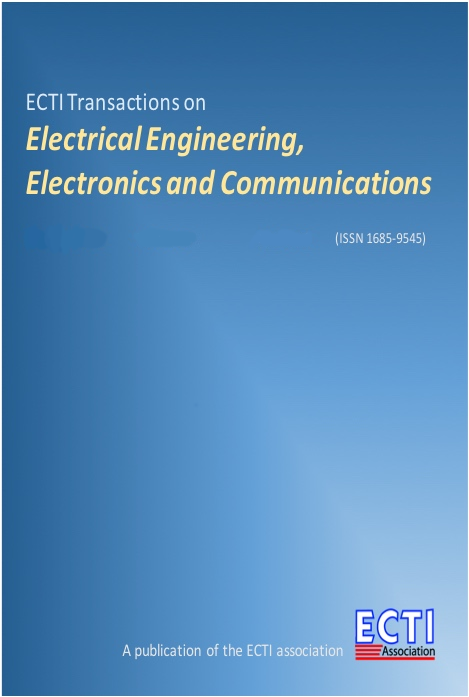Sensitivity Analysis of Switched Reluctance Motor for Potential Application in Electric Vehicles Considering Weight Factor
Main Article Content
Abstract
The switched reluctance motor (SRM), an environmentally friendly machine, is suitable for application in electric vehicles (EV) in recent days. This paper presents an SRM sensitivity analysis focussing on weight of the materials used for stator and rotor for use in electric vehicle application. Two SRM structures are considered, namely normal stator tooth and tapered stator tooth. Thirteen materials widely used in the SRM are considered for these two structures to perform the proposed sensitivity analysis. The major outputs of torque, speed, power, iron loss, efficiency, copper loss, and power factor are gathered through finite element analysis (FEA) simulation. Each of the 13 materials are examined for normal tooth and tapered tooth geometrical structures. The results are discussed, focusing on the fitness of the considered SRM structures for EV application. As weight-sensitive vehicles, the materials used in EVs are compared against the respective motor weights obtained through analysis to recommend the lightest motor for production.
Article Details

This work is licensed under a Creative Commons Attribution-NonCommercial-NoDerivatives 4.0 International License.
This journal provides immediate open access to its content on the principle that making research freely available to the public supports a greater global exchange of knowledge.
- Creative Commons Copyright License
The journal allows readers to download and share all published articles as long as they properly cite such articles; however, they cannot change them or use them commercially. This is classified as CC BY-NC-ND for the creative commons license.
- Retention of Copyright and Publishing Rights
The journal allows the authors of the published articles to hold copyrights and publishing rights without restrictions.
References
L. Sitsha and M. Kamper, “Some design aspects of tapered and straight stator pole 6:4 switched reluctance machine,” in IEEE 5th African Conference, Cape Town, South Africa, 1999, pp. 683–686.
C. Neagoe, A. Foggia, and R. Krishnan, “Impact of pole tapering on the electromagnetic torque of the switched reluctance motor,” in 1997 IEEE International Electric Machines and Drives Conference Record, Milwaukee, WI, USA, 1997, pp. WA1/2.1–WA1/2.3.
G. Pellegrino, A. Vagati, B. Boazzo, and P. Guglielmi, “Comparison of induction and PM synchronous motor drives for EV application including design examples,” IEEE Transactions on Industry Applications, vol. 48, no. 6, pp. 2322–2332, Nov. 2012.
U. Sholahuddin, A. Purwadi, and Y. Haroen, “Structural optimizations of a 12/8 switched reluctance motor using a genetic algorithm,” International Journal of Sustainable Transportation Technology, vol. 1, no. 1, pp. 30–34, Apr. 2018.
M. Ćosović, S. Smaka, I. Salihbegović, and Š. Mašić, “Design optimization of 8/14 switched reluctance machine for electric vehicle,” in 2012 XXth International Conference on Electrical Machines, Marseille, France, 2012, pp. 2654–2659.
T. Ishikawa, Y. Hashimoto, and N. Kurita, “Optimum design of a switched reluctance motor fed by asymmetric bridge converter using experimental design method,” IEEE Transactions on Magnetics, vol. 50, no. 2, pp. 781–784, Feb. 2014.
K. Zhang, X. Huang, J. Zhang, L. Wu, Y. Fang, and Q. Lu, “Design and analysis of a switched reluctance motor with superconducting windings and tapering poles,” IEEE Transactions on Applied Superconductivity, vol. 26, no. 7, Oct. 2016, Art. no. 5208204.
S. R. Mousavi-Aghdam, M. R. Feyzi, N. Bianchi, and M. Morandin, “Design and analysis of a novel high-torque stator-segmented SRM,” IEEE Transactions on Industrial Electronics, vol. 63, no. 3, pp. 1458–1466, Mar. 2016.
K. Rahman, B. Fahimi, G. Suresh, A. Rajarathnam, and M. Ehsani, “Advantages of switched reluctance motor applications to EV and HEV: design and control issues,” IEEE Transactions on Industry Applications, vol. 36, no. 1, pp. 111–121, Jan. 2000.
A. Omekanda, “A new technique for multidimensional performance optimization of switched reluctance motors for vehicle propulsion,” IEEE Transactions on Industry Applications, vol. 39, no. 3, pp. 672–676, May 2003.
A. Radun, “High-power density switched reluctance motor drive for aerospace applications,” IEEE Transactions on Industry Applications, vol. 28, no. 1, pp. 113–119, Jan. 1992.
K. Kiyota and A. Chiba, “Design of switched reluctance motor competitive to 60-kW IPMSM in third-generation hybrid electric vehicle,” IEEE Transactions on Industry Applications, vol. 48, no. 6, pp. 2303–2309, Nov. 2012.
K. Vijayalakshmi and K. N. Srinivas, “Reduction of torque ripple, vibration and noise in switched reluctance motors focusing on electric vehicle applications: a survey,” International Journal of Vehicle Noise and Vibration, vol. 17, no. 1–2, pp. 51–81, 2021.


